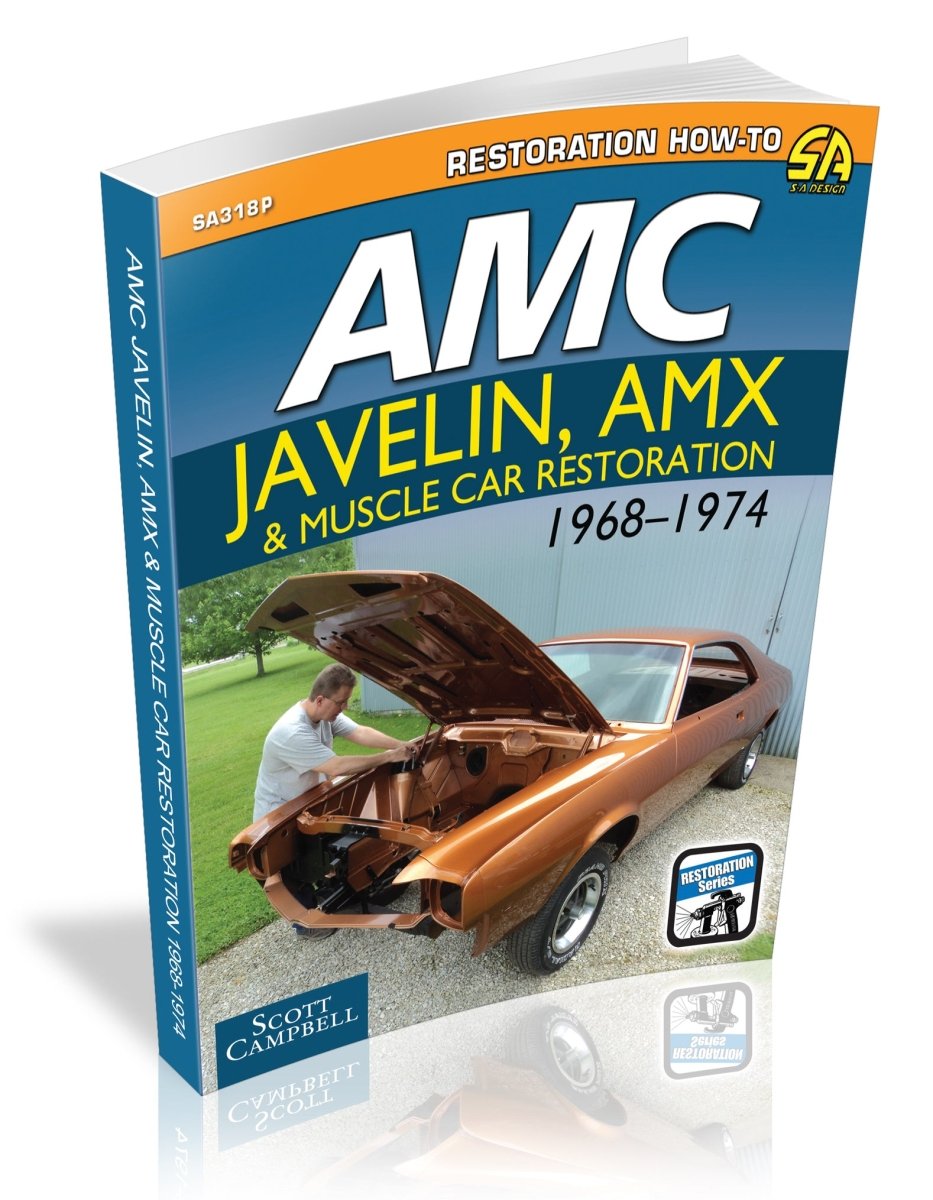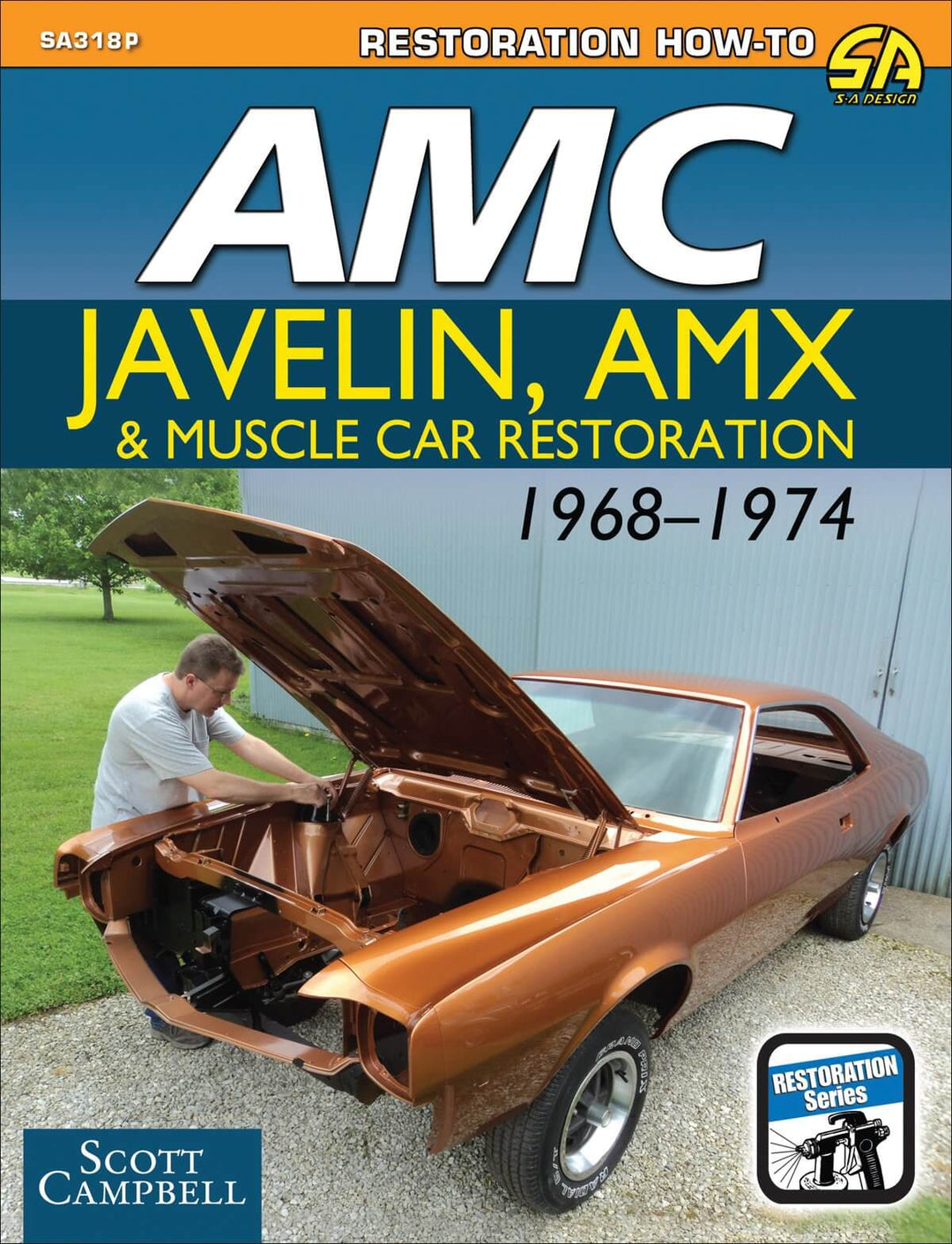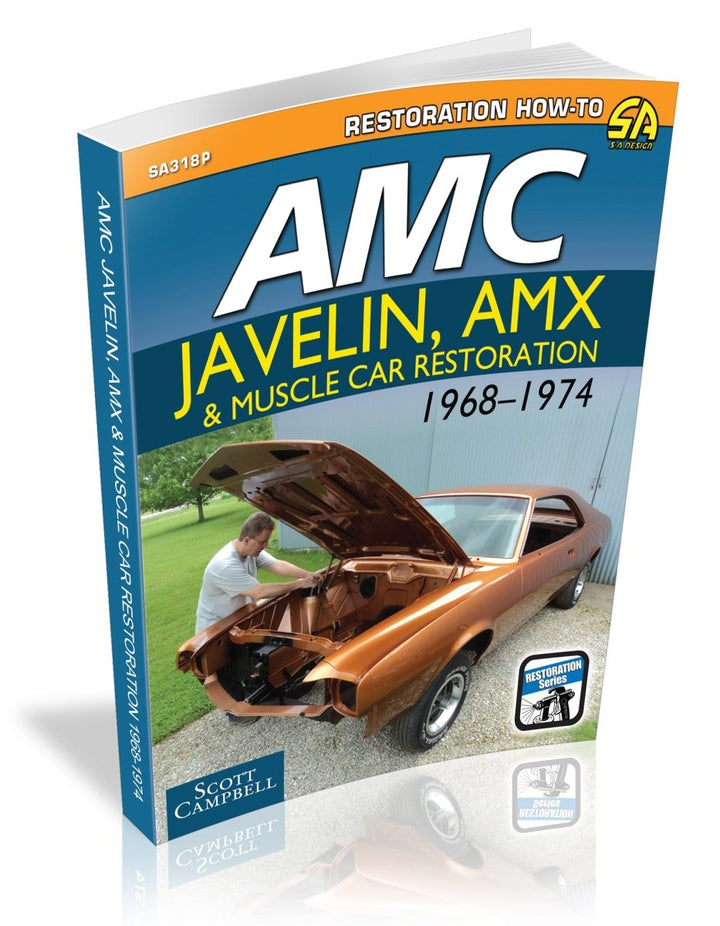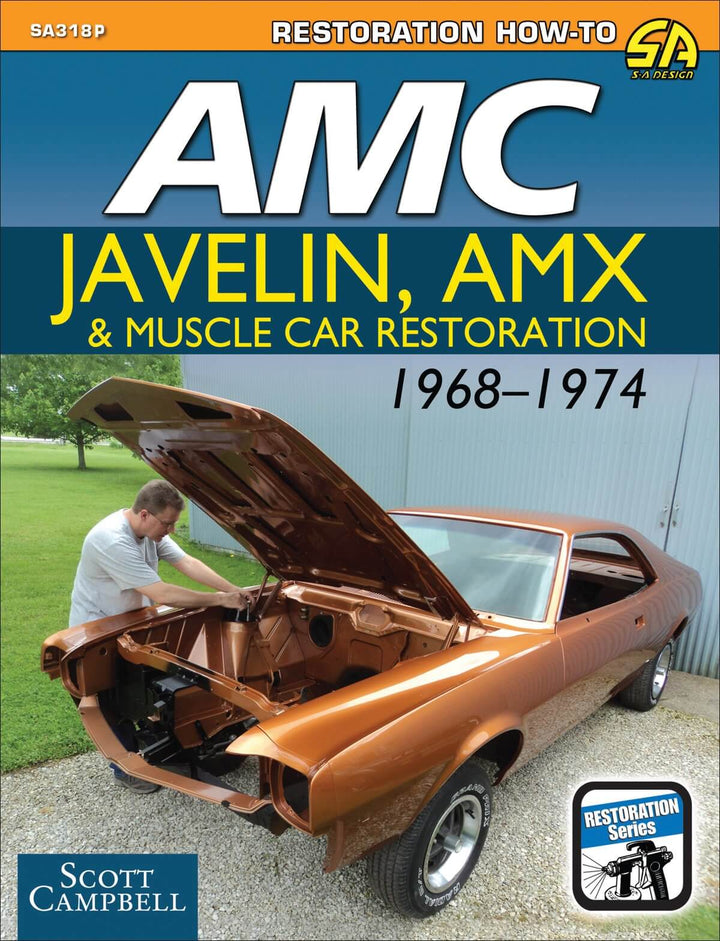There was a time when AMC performance was more of an afterthought to the muscle car era. Sure, the Javelins and AMX cars were cool, as were the really limited cars such as the Scrambler and the Rebel Machine, but with production numbers a distant fourth place in the American manufacturer muscle car scene, well, you could be forgiven for not remembering much about them through the years. Fast forward to today, and AMC muscle cars are among the fastest appreciating performance vehicles in the market. Low production numbers combined with capable performance as well as cool and unique styling have increased coverage in magazines and at auctions, making these cars more valuable than ever before. Concours-restored AMC muscle cars routinely bring $30,000 to $65,000 in the collector car world, making a comprehensive restoration guide a must-have for any American Motors enthusiast.
AMC Javelin, AMX and Muscle Car Restoration 1968-1974 provides in-depth coverage of the decoding and documentation process of an AMC muscle car, primarily the popular Javelin and AMX models. Author and expert AMC restorer Scott Campbell gives you a detailed account of important aspects of restoration including rust repair; panel and sheet-metal replacement; interior and trim restoration; undercarriage chassis, suspension, and driveline rehabilitation; as well as every other major component group. Also included are multiple "how-to" sequences that, regardless of your skill level, will assist you in restoring your AMC muscle car.
This restoration guide chronicles the entire process of AMC ownership from selecting a vehicle to disassembly to final re-assembly. You will find coverage of all steps throughout: from turning the first bolt to tumbling the key in the ignition following completion of your restoration. If you own an AMC muscle car, especially a Javelin or an AMX, this restoration guide will be your go-to source for restoring glory to your unique AMC muscle car.n
Acknowledgments
Introduction
Chapter 1:
Finding Your Project Car
Model Year Rundown
Where to Look
Vehicle Identification Number
Door Tag Codes
AMX Dash Number
Engine Casting Numbers
Popular Options
Red Flags
Play it Safe
Chapter 2:
Creating a Game Plan
Driver, Show Car or Street Machine
Complete or Partial Restoration
Time and Space Requirements
Making a Budget
Chapter 3:
Getting Started
Your Work Area
Tools and Equipment
Safety First!
Cleaning and Inspection
Disassembly
Storing the Parts
Replacement Parts Sources
Chapter 4:
Body Repair
Evaluating Condition
Paint Removal
Bolt-On Panels
Structural Rust Repair
Outer Body Rust
Surface Rust
Collision Damage
Door Hinges
Panel Adjustment
Block Sanding and Prep
Chapter 5:
Painting Your Car
Interior Body Paint
Cutting in the Color
Exterior Body Paint
Caring for Paint
Chapter 6:
Engine and Transmission
Inspection
Removal
Disassembly
Painting and Detailing
Transmission
Chapter 7:
Engine Compartment
Refinishing Small Parts
Cowl and Firewall
Engine Installation
Engine Accessories
Cleaning Tip
Chapter 8:
Undercar Components
Suspension System
Steering System
Driveshaft
Braking System
Exhaust System
Wheels and Tires
Brake Lines and Fuel Lines
Restore or Over-Restore?
Chapter 9:
Interior
Interior Removal
Window Glass
Dash and Console
Seats
Seat Belts
Door Panels
Steering Wheel
Interior Refinishing
Chapter 10:
Trunk
Chapter 11:
Body Trim and Finishing
Rubber Parts
Bumpers
Moldings and Trim
Grille and Lights
Vinyl Top and Stripes
Chapter 12:
Performance Upgrades
Chapter 13:
Presentation and Showing
Detailing
Presentation
Car Show Props
Chapter 14:
Care and Storage
Driving and Parking
Weather Conditions
Storage Tips
Chapter 15:
Future Collectibility
Conclusion
Source Guide





